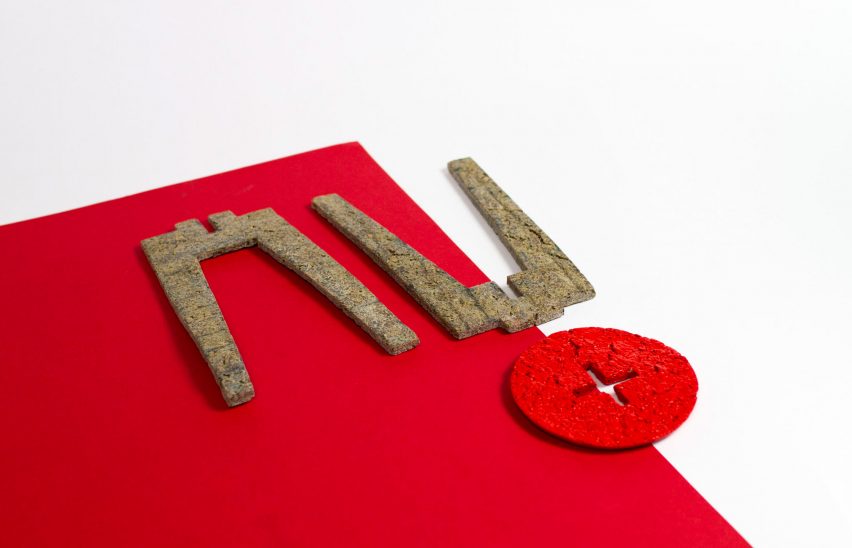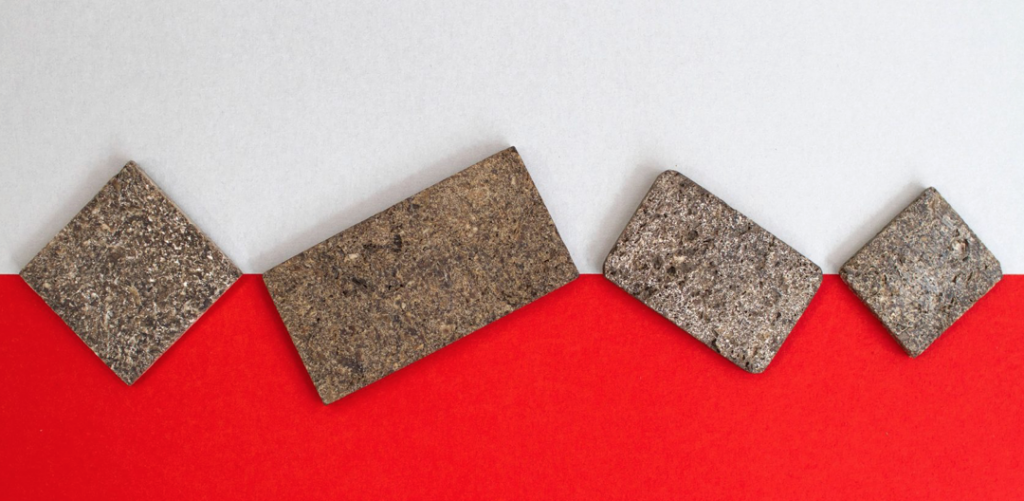Bioplastic Made From Potato Waste
London-based designers Rowan Minkley and Robert Nicoll use waste potato peelings to create an eco-friendly alternative to single-use materials like MDF and chipboard, called Chip[s] Board.
Shocked by the environmental impact and short lifespan of many readily disposable materials, Minkley and Nicoll set out to develop a material that, if thrown out in the same way, wouldn’t have the same negative environmental impact.

The name Chip[s] Board is a play on the fried potato treat and the material chip board. The new material is biodegradable post-use and, unlike MDF, doesn’t contain formaldehyde or other toxic resins and chemicals.
While MDF is a useful material, it is also damaging to the environment, with the UK furniture sector currently disposing of or incinerating 140,000 tonnes of MDF per year, due to its inability to be recycled.
The designers believe that the circular economy should be the starting point when designing any new products and materials.
They wanted to combine this issue of material waste with the problem of food waste, which sees a third of all food produced ending up in the bin. The result is a sustainable wood substitute made from the waste potato peelings created from industrial food processing.
The invention saw Minkley recently announced as the UK’s “most promising young engineering entrepreneur” by the Royal Academy of Engineering Enterprise Hub, as part of its annual Launchpad Competition, which aims to encourage more young people to start their own engineering businesses.

After collecting the peelings from manufacturers, they put the raw potato peel through various refinement processes to create a binding agent that can be applied to their fibres – which include potato skins, bamboo, recycled wood or beer hops.
They then use this to form the material by heat pressing the composite into a robust sheet of board that can be processed into an array of products, such as furniture and building materials.
Once they have reached the end of their life span, these products can be sent to industrial compost to be biodegraded into fertiliser for use back at a farm where they were originally taken from.
As Minkley and Nicoll have currently filed a patent for their manufacturing process, they aren’t able to disclose many details about the making of the material.
However they explain that the forming and pressing processes mimic the same conditions found in MDF manufacturing, except toxic formaldehyde-based resins are replaced with waste-derived biodegradable binders.
“As Kingston University graduates, our approach to prototyping has been through the art of “thinking through making”, said the duo.
“The original development involved a lot of trial and error – mixed with some hack chemistry and educated guesses – as well as a strong strategy and vision to create a positive change to the materials industry.”
This allowed the duo to develop strong and usable boards, with the help of co-founder Greg Cooper whose background in biochemistry helped them to experiment with each sheet, refining the product until it could be produced commercially.

The designers are also developing other sustainable materials, with a focus on bioplastics which have received considerable interest from designers in the fashion industry.
Also overwhelmed by the amount of potato peel waste produced by fries companies, Italian designers Simone Caronni, Paolo Stefano Gentile and Pietro Gaeli created an ecological packaging for fries made from recycled potato skins, as a sustainable alternative to paper.
As the packaging is made from 100 per cent potato peel, it is also fully biodegradable, returning to the biological cycle by becoming fertiliser for plants or animal food, just like Minkley and Nicoll’s Chip[s] Board.

